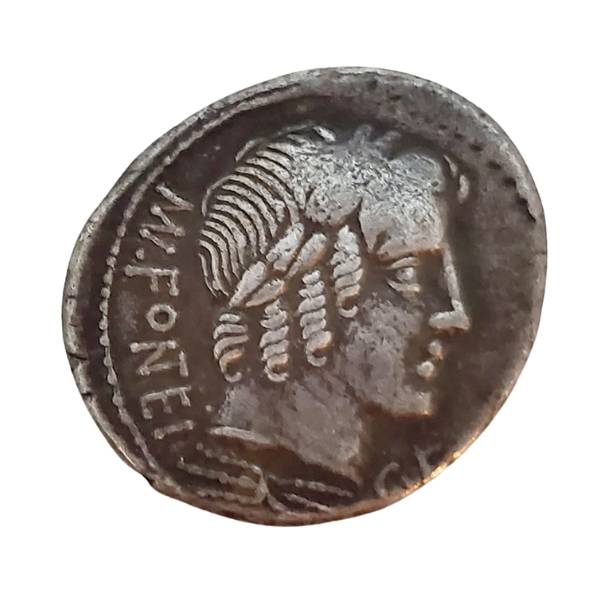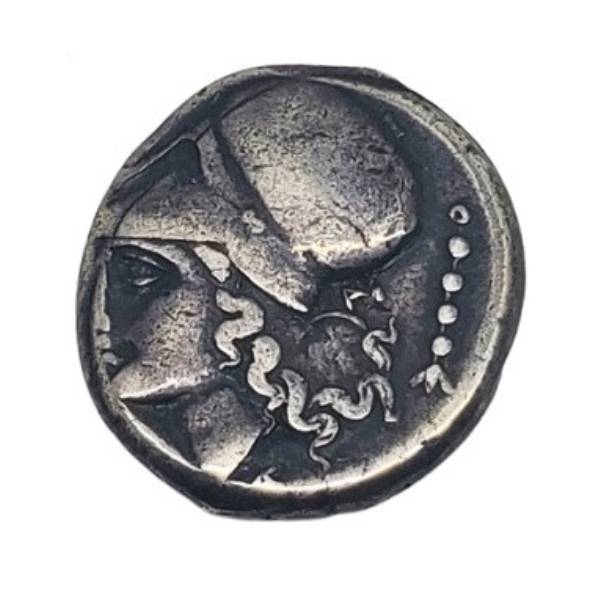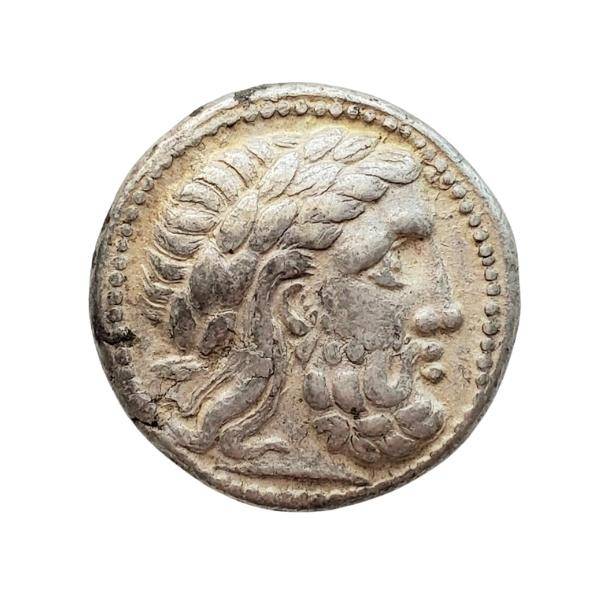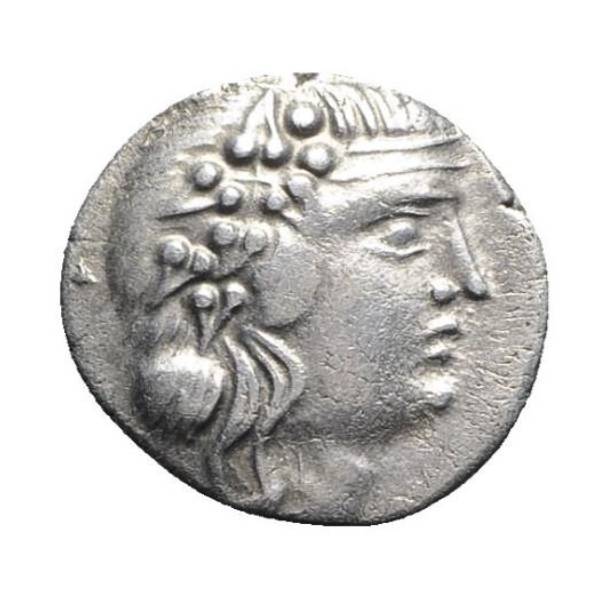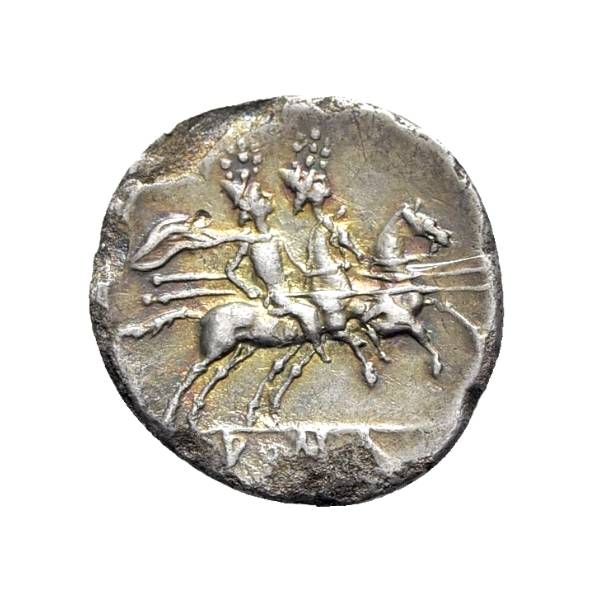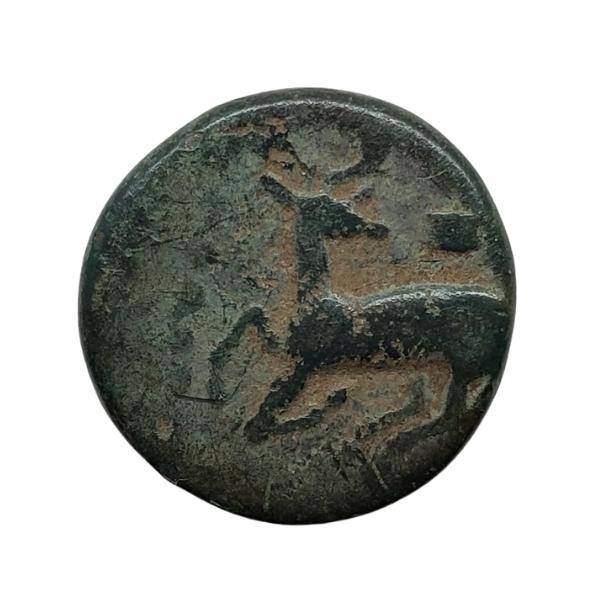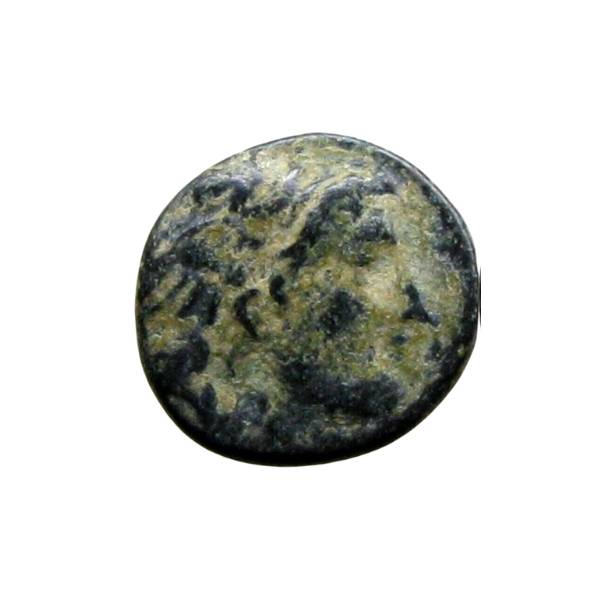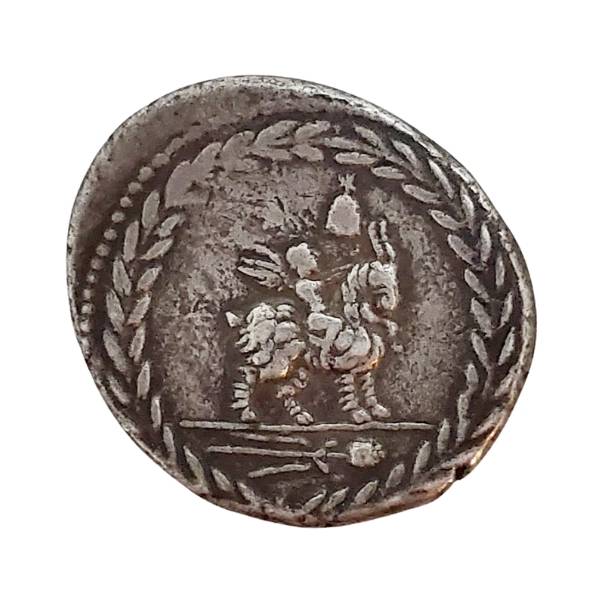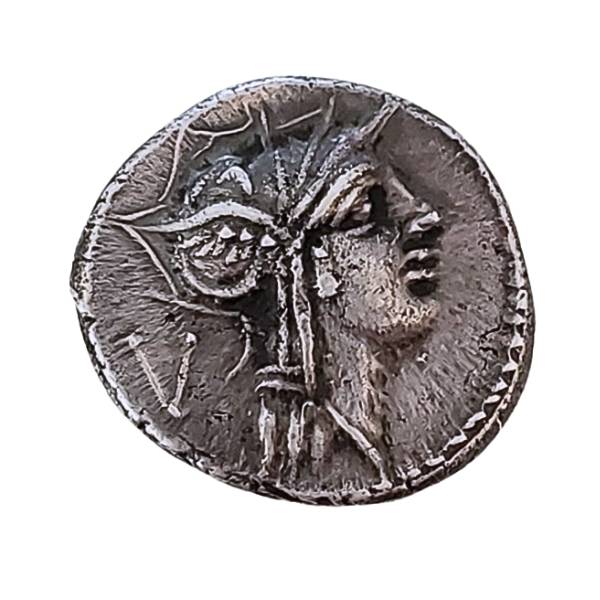Ancient Coin Symbolism
Symbolism of mythical gods in ancient coins
Apollo: God of the Sun and the Arts
Apollo symbolizes harmony, reason, and moderation, representing the ideal of a balanced life. Apollo, the god of light, truth, music, and healing, is often depicted with a lyre or a bow. As the god of prophecy, Apollo also governed the Oracle of Delphi, offering guidance to mortals. His role as the sun god, driving the sun's chariot across the sky, makes him a symbol of clarity, light, and vision, bringing truth to the world.
Athena: Goddess of Wisdom and War
Athena is the goddess of wisdom, courage, and strategic warfare; representing a harmonious balance of intellect and strength. According to Greek mythology, Athena was born fully armed from Zeus’s forehead. Athena’s symbol, the owl, embodies knowledge and keen insight, while her armor and spear represent disciplined warfare. She is also the protector of Athens, as symbolized by the Parthenon, and is often associated with olive trees, which signify peace and prosperity.
(Roman Minerva)
Zeus: King of the Gods
Zeus, with his mighty thunderbolt, represents law, order, and the enforcement of divine authority. Zeus, as the ruler of Mount Olympus, is the god of the sky, thunder, and justice. Often depicted on ancient coins with an eagle or lightning bolt, Zeus symbolizes power and rulership, standing as the ultimate protector of both gods and mortals. His many unions with goddesses and mortals also tie him to themes of fertility and creation.
(Roman Jupiter)

Dawn: Goddess of the Morning
Eos, or Dawn, is the personification of the first light of day. She symbolizes renewal, hope, and the endless cycle of life, bringing light to the world each morning. As she flies across the sky with her golden fingers spreading light, Eos represents new beginnings, a fresh start each day, and the promise of a brighter future.
Dionysus: God of Wine and Ecstasy
Dionysus is the god of wine, fertility, and revelry. He is a symbol of liberation, transformation, and the breaking of boundaries. His followers would enter ecstatic states of divine possession, symbolizing the god’s power to dissolve the barriers between the mortal and divine realms. Dionysus is often associated with vines, grapes, and panthers, representing both nature's bounty and the wild, untamed aspects of life.
(Roman Bacchus)
The Dioscuri: Gemini Twins
Castor and Pollux, known together as the Dioscuri, were the divine twins associated with protection in battle and safe sea voyages. They were revered as patrons of sailors and horsemen, often depicted with horses or stars above their heads, symbolizing their role as celestial guides. The Dioscuri represents brotherhood, loyalty, and the bond between humanity and the divine.
Artemis: Twin sister to Apollo
Goddess of the hunt, wilderness, and independence. Artemis (Diana in Roman mythology) embodied the spirit of independence, freedom, and living in harmony with nature, often representing the primal, untamed side of life.
Liber: God of Freedom and Fertility
Liber, closely aligned with Bacchus/Dionysus, was the Roman god of viticulture and freedom. As a symbol of fertility, he presided over crops, wine, and social liberties. Liber's festivals, which involved public celebrations of freedom and revelry, emphasize his role in promoting not just physical growth but also the idea of personal and civic liberty.
Gorgon: Medusa
Despite their terrifying nature, Gorgons—especially Medusa—became protective symbols. Her head, called the Gorgoneion, was placed on buildings, armor, shields, and coins to ward off evil and protect.
As the only mortal Gorgon, Medusa’s vulnerability added emotional depth to her story and reminded the ancient Greeks of the line between divine and human realms.
Genius: The Divine Guardian Spirit
In Roman belief, the Genius was a personal guardian spirit associated with individuals, families, and even cities. Each person was thought to have a Genius that guided and protected them throughout life. For emperors, the Genius symbolized their divine right to rule and was venerated as a representation of the state’s prosperity. The Genius embodies individuality, protection, and the invisible force of destiny guiding human lives.
Roma: Personification of Rome
Roma was the embodiment of the city of Rome itself, representing the strength, endurance, and power of the Roman Empire. Often depicted as a warrior goddess seated or standing with a spear and shield, she symbolized the eternal nature of Rome, its military prowess, and the unyielding spirit that made it a global power. Roma encapsulates the Roman values of honor, duty, and strength in battle.
Victoria (Victory): Goddess of Triumph
Victoria, the personification of victory, was highly revered in Roman society, symbolizing military success and the expansion of the empire. She was often depicted with wings, holding a laurel wreath, symbolizing eternal glory. Victoria’s image was often placed on coins and monuments to commemorate Roman victories, reinforcing the connection between divine favor and the empire’s military dominance.

